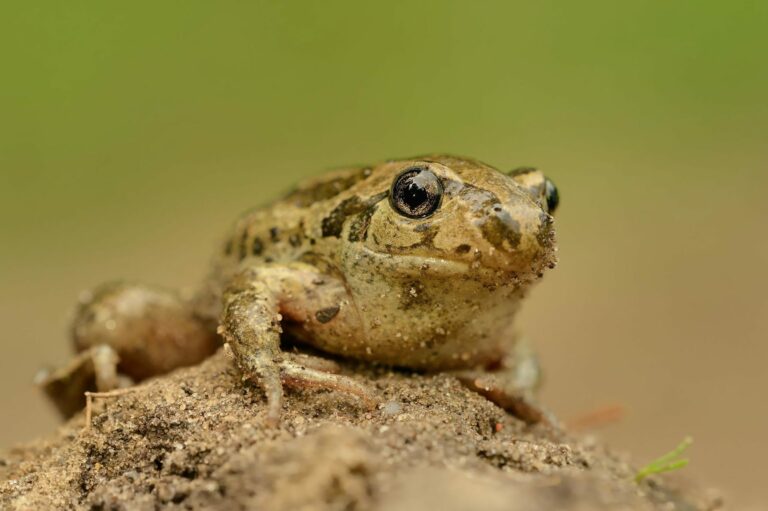Pelobates fuscus

The spadefoot toad can grow up to 8 cm in size and has a nearly smooth skin with only a few warts. Its upper body is light gray to brown with dark spots, while the underside is light-colored and only partially spotted (Schaefer 2018). Pelobates fuscus lives on loose and sandy soil, where it buries itself, especially during hibernation. It becomes predominantly active at night starting from April. Standing, sunny bodies of water are preferred as breeding sites. A female spadefoot toad can lay 1400-3400 eggs. The larvae feed on plant matter (such as algae) as well as on animal organisms and carrion. The larvae themselves are preyed upon by birds such as the grey heron or the mallard, as well as by fish. Predators of adult spadefoot toads include the tawny owl and wild boar, for example. This species is primarily threatened by habitat changes such as soil compaction or the filling of breeding sites, as well as the introduction of pesticides and fertilizers (Glandt 2018).
Diet: Adult garlic toads primarily feed on beetles and other insects, as well as spiders, snails, and earthworms (Glandt 2018).
Threat status: The IUCN Red List for endangered species describes a declining population trend but still classifies the spadefoot toad as “least concern” globally. In Germany, this species is already considered endangered and is “protected” throughout Europe under the EU Habitats Directive (FFH-Richtlinie) and “strictly protected” under the Federal Nature Conservation Act (Bundesnaturschutzgesetz).
-
Glandt, D (2018)Praxisleitfaden Amphibien- und Reptilienschutz. Schnell – präzise – hilfreich. Berlin, Heidelberg: Springer Berlin Heidelberg.
-
Schaefer, M (2018)Brohmer – Fauna von Deutschland. Ein Bestimmungsbuch unserer heimischen Tierwelt: Quelle & Meyer Verlag GmbH & Co